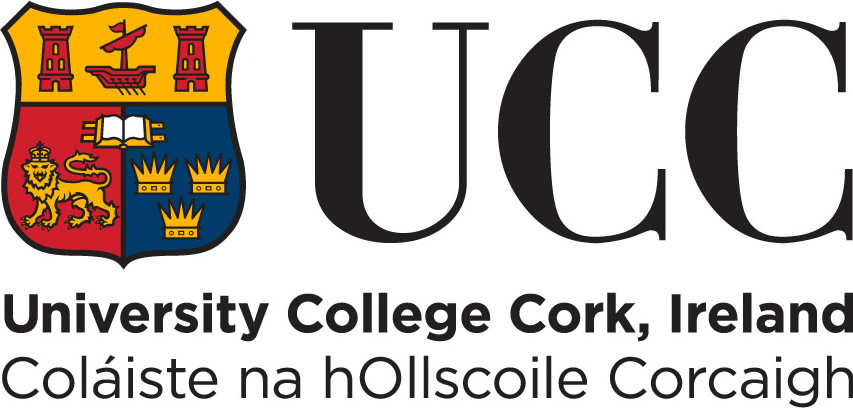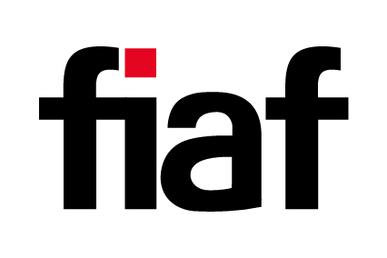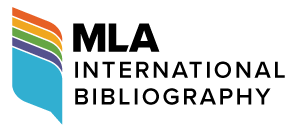Expanded Visions: A New Anthropology of the Moving Image, by Arnd Schneider. Routledge, 2021, 194 pp.
Kathryn Ramey
Review
As an anthropologist and contemporary artist working in analogue film for both cinematic exhibition and installation and writing and publishing within anthropology and cinema studies, one of my ongoing frustrations has been the lack of true understanding between these disciplines of the other’s languages, practices, history and training of practitioners. On each side there is a major failure to see and comprehend as valuable the other’s epistemological strategies. Artists and those who write about them tend to deploy the term ethnographic as an adjective to mean practically anything to do with culture or whatever they may mean by that (e.g. Catherine Russell). On the other hand, anthropologists tend to uncritically exoticise the artists they purport to admire, research or work with, treating their material practices, working methods and ways of knowing as exotic and individual rather than the product of years of disciplinary training and study, enmeshed in and participating within deep cultural, community-based traditions as well as in dialogue with broader aesthetic and technological histories. From the first time I met Arnd Schneider, several years ago at the American Anthropological Association annual meeting, when we presented together on a panel that would become the collected volume Made to be Seen: Perspectives on the History of Visual Anthropology,it was very clear that he had an expanded and unconventional way of thinking about anthropology in relation to the arts. Although my primary research and teaching is within the field of experimental film, in the years after that conference I participated in a seminar on experimental film and anthropology that Schneider organised with Caterina Pasqualino and appreciated his numerous collaborative volumes that covered a vast array of interests and intersections between anthropology and the arts.[1] Expanded Visions: A New Anthropology of the Moving Image stands as a major corrective to the convention of othering described above and is a refreshing take from within anthropology that avoids discussing what a film is about but thinks broadly about what moving images and moving image practitioners can do that is anthropological.
That said, the book is a collection of mostly previously published works put together in a single volume, so if critics are looking for something entirely new, they will not find it here. However, despite my ongoing connection to Schneider, this text introduced me to essays of his with which I was unfamiliar, including an embedded look at a feature film being shot in a Mapuche village in Argentina (Chapter 5), which follows the challenge put forward by Hortense Powdermaker so long ago to study the workers in the “dream factory”, which few anthropologists have bothered to take up. This chapter is a fascinating look at the incommensurability of the narrative filmmaking construction of space-time and that of the people who are allowing the filmmakers to work among them and, in some cases, working as extras. What is refreshing is that Schneider spends the same amount of time thinking through the culture of the film world as he does covering the Mapuche’s response to it, presenting a good model for future research on cinema practice. The focus of this collection is specifically on the moving image: not multimodality, not an anthropology of the senses, not whatever is au courant at the time of its writing, but a series of approaches to the ways in which moving images are made (artisanal, commercial, participatory/ collaborative) and used (installation, performance, conventional theatrical distribution, community-based exhibition/reception). Schneider takes as his premise to “prize open the huge and radical epistemological potential of expanded cinema and experimental film for anthropology” (1). Expanded cinema here means the way in which moving images have been used within contemporary art and experimental cinema and performance as installation, performance, and participatory events along with small scale/community-based theatrical exhibition, but not—and this is critical—for conventional commercial cinema and streaming exhibition. These “experimental means” are for Schneider a critical intervention into what he sees as the dangers of the “hyperreal” of the kind of realist representation of conventional anthropological cinema (e.g. “[w]hole bodies, whole interactions, and whole people in whole acts” (Heider 114)) as something that must be interrupted by experimental means to reveal both the artificiality of representation and challenge the viewer.What Schneider draws from experimental film and experimental filmmakers is that, in contrast to commercial or industrial cinema (what experimental filmmakers call “illusionist” cinema (47)), the methods of working, the intended impact on the viewer, the aesthetic or style of each experimental film is as distinct as its maker. It is individual and artisanally produced and distributed. This method of creation and exhibition is the central aspect that creates significant overlap between experimental and ethnographic cinema. They are made by the people who they are made for. Schneider doesn’t just look to experimental cinema for inspiration. In looking at what he calls “photofilms” in Chapter 4 (65), he brings together works by artists and anthropologists who utilise still frames to create sequential video works, arguing that significant potential remains in this form. While he mentions photo elicitation as a potential part of this practice, bringing to mind Peter Biella’s 2016 film Changa Revisited, he does not confine the possibilities to this technique, referencing the works of Alain Resnais, Agnès Varda and Chris Marker, but also citing a collaboration by Dick Blau and Steven Feld, A Polish Easter in Chicago (Dick Blau, 2012), to round out his assessment that, rather than acting as illustrated lectures, this photofilm technique “reanimates” the stills through sound and montage (79). This idea of reanimation connects to his critique of conventional ethnographic film privileging a kind of unmediated temporal and spatial style which Schneider critiques as distorting in its hyperreality. Photofilms go in the opposite direction, looking at a moment frozen in time and bringing it alive with description and/or sonic enrichment, thus moving away from an indexical link between image and some supposed past reality and bringing forward the dialogical inquiry at the centre of true participant observation—what was this moment and how did we and do we each make sense of it to reveal rich overlapping and shared meaning making between interlocutor and anthropologist/artist.
Schneider is deeply interested in how creating moving images creates sociality. In Chapter 6, another previously published piece of research that I was unfamiliar with, he discusses an Argentinian film club called “Cine Con Vecinos” (CCV or “Cinema with Neighbours”) that began producing work in the 1990s to show on a local cable station. This has expanded to make features, shorts and “cine-express” (much like the 48-hour film project in North America), in which digital filmmaking instruction is combined with the creation of short works that are then screened locally. While CCV began in Saladillo, it has expanded its workshops throughout Argentina and internationally, and while most producers and actors are vecinos (neighbours), the group also occasionally works with professional actors and screens its films in more commercial venues. Despite gaining broader acceptance in Argentine commercial cinema, Schneider observes that within the group is a participatory cinema that engenders collaboration and non-hierarchical production practices that are in direct contrast with the “set-etiquette” he observes in Chapter 5.
The final chapter, which had been presented as a talk but not previously published, takes a look at the intersection between anti-colonial cinematic work and the ideas of restitution and repatriation in the museum context. Taking the 1953 film Statues Also Die (Les Statues meurent aussi) by Alain Resnais and Chris Marker, a critique of the museumification of objects stolen during colonialism, as his jumping-off point, Schneider asks the question, “Can film restitute?” He goes on to think through this question using films such as Remembering Yayayi (Fred Myers et al., 2014) in which Fred Myers and Lisa Stefanoff return to the Pintupi communities with footage filmed by Ian Dunlop in the 1970s and film this process. Schneider proceeds to remark on works by artist-filmmakers that also engage with questions of restitution such as the stop-motion animated short How to Steal a Canoe (2016) by Amanda Strong, in which a woman rescues a canoe from a museum and returns it to the lake where it would have been used. He finishes this final chapter with a call for respectful collaboration and “uneven hermeneutics” (166), a phrase he has used before (“Between”), which is taken originally from James Clifford’s essay “On Ethnographic Surrealism”. In answer to the question posed at the beginning of the book, “What can moving images do that is anthropological?”, Schneider echoes Clifford’s call for an anthropological engagement with artists and indigenous, aboriginal and first-people’s ways of knowing, ways of telling, ways of making and ways of showing that would expand the anthropological communicative toolkit in productive and exciting ways.
Notes
[1] This symposium at Musée du Quai Branly, Paris, France, held between 30-31 March 2012 resulted in the edited volume Experimental Film and Anthropology, to which I contributed an essay.
References
1. Banks, Marcus, and Jay Ruby, editors. Made to Be Seen: Perspectives on the History of Visual Anthropology. U f Chicago P, 2011.
2. Biella, Peter, and Leonard Kamerling. Changa Revisted. Documentary Educational Resources, 2016.
3. Blau, Dick, director. A Polish Easter in Chicago. 2012, vimeo.com/37396695.
4. Clifford, James. “On Ethnographic Surrealism.” The Predicament of Culture: Twentieth-Century Ethnography, Literature, and Art. Harvard UP, 2002.
5. Heider, Karl G. Ethnographic Film. U of Texas P, 2006.
6. Myers, Fred, et al, directors. Remembering Yayayi. Documentary Educational Resources, 2014.
7. Powdermaker, Hortense. Hollywood, the Dream Factory: An Anthropologist Looks at the Movie-Makers. Martino, 2013.
8. Resnais, Alain, and Chris Marker, directors. Statues Also Die [Les Statues meurent aussi]. Présence Africaine/Tadié Cinéma, 1953.
9. Russell, Catherine. Experimental Ethnography: The Work of Film in the Age of Video. Duke UP, 1999.
10. Schneider, Arnd. “Between Uneven Hermeneutics and Alterity: The Dialogical Principle in the Art–Anthropology Encounter.” Field, no. 11, Fall 2018, www.field-journal.com/issue-11/between-uneven-hermeneutics-and-alterity-the-dialogical-principle-in-the-art-anthropology-encounter.
11. Schneider, Arnd, and Caterina Pasqualino, editors. Experimental Film and Anthropology. Bloomsbury Academic, 2014.
12. Strong, Amanda, director. How to Steal a Canoe. YouTube, 29 Nov. 2016, youtu.be/S1vCPVviNiY.
Suggested Citation
Ramey, Kathryn. “Expanded Visions: A New Anthropology of the Moving Image, by Arnd Schneider.” Alphaville: Journal of Film and Screen Media, no. 23, 2022, pp. 115–119. https://doi.org/10.33178/alpha.23.07
Kathryn Ramey is an artist and anthropologist whose work operates at the intersection of experimental film processes and ethnographic research. Her award-winning and strongly personal films are characterised by manipulation of the celluloid including hand-processing, optical printing, and various direct animation techniques. Her scholarly interest is focused on the social history of the avant-garde film community, the anthropology of visual communication and the intersection between avant-garde and ethnographic film and art practices. Ramey’s book Experimental Filmmaking: Break the Machine (Focal Press, 2016) is a thinly veiled experimental ethnography on the contemporary experimental film scene masquerading as a textbook on experimental film techniques written in the freehand voice of a zine. She is a full professor in the Department of Visual and Media Arts at Emerson College, USA.









